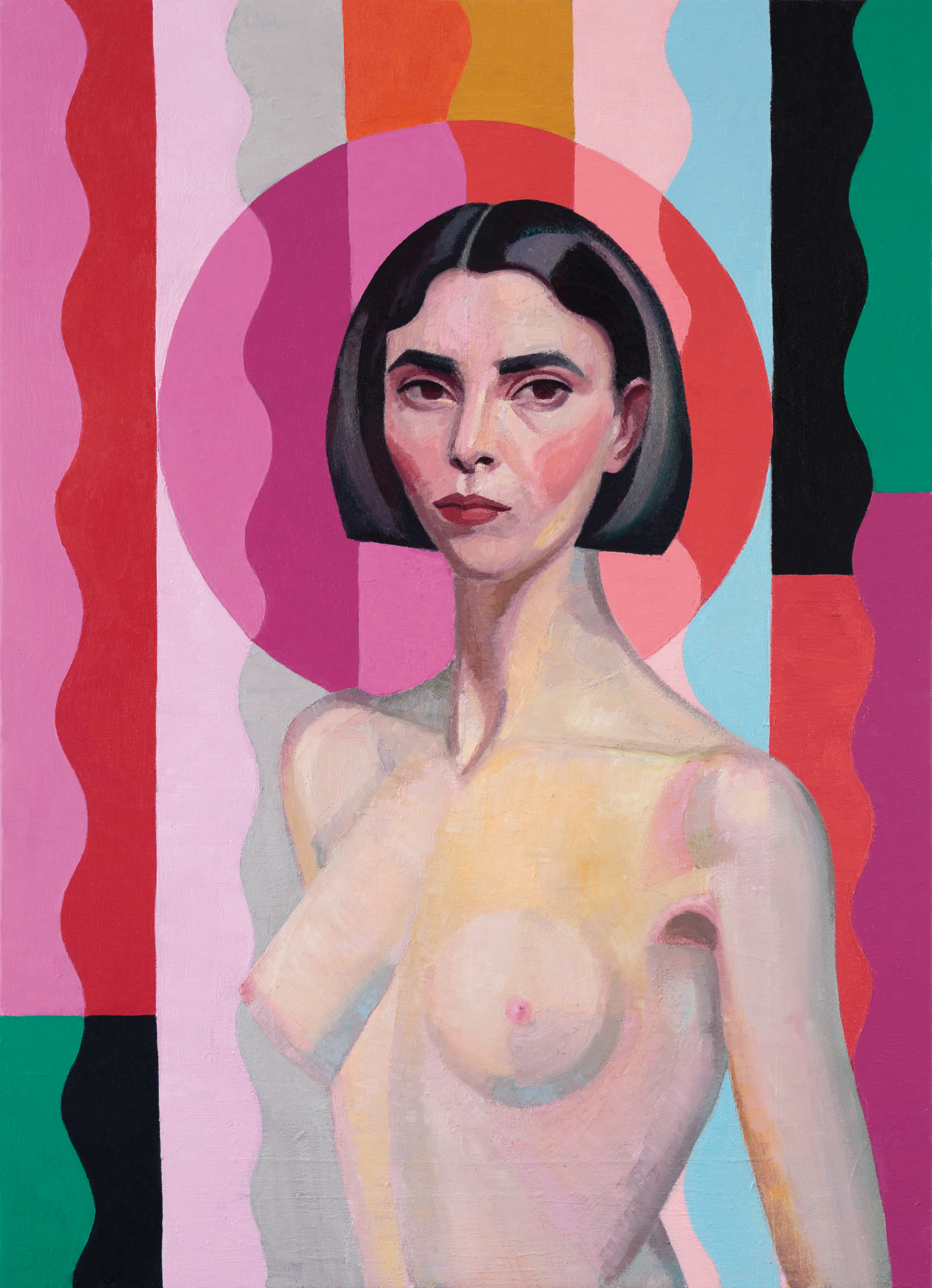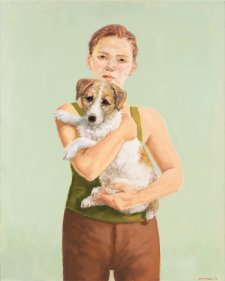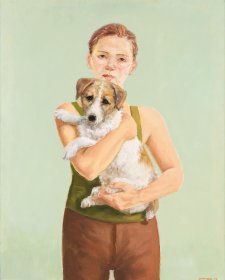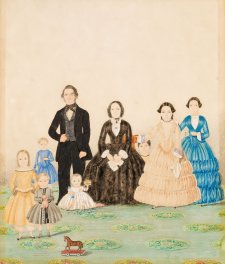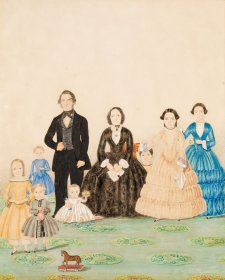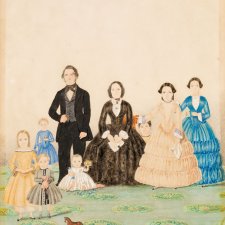In 1997 I made my first oil painting, a self-portrait at seventeen. It became apparent that the challenge of a self-portrait was in reconciling the persona of my daily life with the unseen self that one experiences. At that early stage my painting incorporated a realist self-portrait (from the mirror), flanked by two others that were ‘psychological’, in dark colours, fittingly. Teen angst loomed large.
The ‘self-portrait’ as subject has endured throughout my practice. Over the past nineteen years this has seen an integration of the personal and art historical in my work.
Nude Self Portrait, after Rah Fizelle 2016 draws the intimacy of a naked body in the studio out into the public realm of art. The stylisation of the figure hides as much as it reveals, as much breast as breastplate, as much face as veil. And, narcissism aside, my physicality lends itself to the paintings I wish to make. Although – as is commonly argued – artists don’t have to pay themselves, can hold a pose with fewer breaks, needn’t move a muscle to have dialogue, are not beholden to another’s likeness, and have an intimacy that surpasses others.
Fizelle’s Morning 1941, is inspiration for the paint-handling, stylisation and pose of this figure. An obvious difference is the gaze – self-portraits possess a different kind of agency. Long before the ‘selfie’ complicated that argument, artists knew the power in painting their own image – a notion notably utilised by women in Renaissance times, establishing their position as artists in a male-dominated field. I have also found that the medium of oil paint itself can incite desire, with paint not solely in service of the image.
Before I painted, I drew people – imaginary women in costumes with bustles and corsets, portraits adorned with earrings and headdresses. In my school years, homework hours were countered with escapist drawing – female faces became the posters of my childhood room. These days my paintings decorate every room of my house, before they find another home.
As my exploration of Modernist abstraction has developed through my still lifes, my approach to the portrait has also evolved. I want to make a picture, not necessarily a portrait. Whether or not one knows the subject is inconsequential; they are paintings to be lived with.
